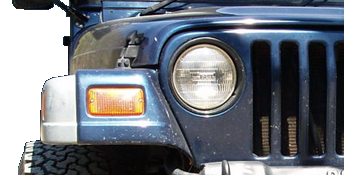With VP-44's the key is fuel flow. Without a Pressure gauge, and a stock lift pump the Supply pressure can quickly drop under 5LBS on a STOCK truck. When we add performance parts the fuel demand goes up. Over time the low pressure issue allows major pump parts AS well as a small diaphragm in the pump to wear. The diaphragm under low fuel conditions over extends which in time will crack the diaphragm surface allowing fuel into the electronics of the pump causing the all to famous PO216 code! This code can also be the result of failing Solder joints on the board ! So the Problem is , The lack of fuel to cool the VP-44 has caused accelerated wear on a pump that was never designed to be used in an automotive scenario in the first place.
The Solution is very simple, Adequate fuel flow into the pump (14-16 constant PSI no lower than 10 PSI)
This can be achieved through a few different methods!
1:A Fuel Air Separation System or FASS for short has a strong enough pump , Complete new plumbing, as well as an on board Fuel Filter, Air Separator, and Water Separator. The unit boast a 4-6 year warranty with filters available in most auto parts stores and performance shops! Available in Multiple GPH and Sizes
2: HPFP from The same company that manufactures the FASS, Diesel Performance Products! This is the same pump and plumbing setup without the filters and air separator!
3: Air Dog , Basically the exact same part as the fass, and as a mater of fact, Manufactured by the father of the owner of the FASS Patent! This product offers less of a warranty and a smaller setup! The fass pumps are designed to handle the absolute toughest conditions on earth , From race trucks to the Ice Road trucks, The fass has proven itself! The Airdog is designed with less quality control and reliability concerns but still is a great option for the daily driver, And more economical as well!
3: The Bully Dog, BD Power and Holley Blue Setup. This pump is a decent setup but leaves alot to be desired! All of the Above use the same pump except the BD , Which uses another Gas Designed pump . The reliability of these systems are low but there extremely economical. Basically a Holley Blue Pump with no Regulator and a big line kit from the tank or tank lines to the pump, and then bigger lines as well to the fuel filter housing. The problems are related to short life, More so in colder climates. Secondly the pressure is higher than we like to see without the regulator, but the regulator restricts fuel flow to the point our minimum of 10lbs cannot be maintained! A Great option for budget systems!
4: Dual pump setup or pump relocation kits consist of plumbing ,brackets and in some cases an additional pump. In theory the relocation kits move the factory carter pump away from vibrations of the block into a less hostile environment, which in most cases extends pump life by a few 1,000 to 100,000 miles but not a true fix to the problem, Especially in modified trucks!
5: The factory Mopar fix... This system removes the original pump and replaces it with a intake pump. This system only further complicated the problem and fixed nothing!
So This long post boils down to this...
A Fuel Pressure gauge or Low Pressure Light is Required!
Anything Under 10PSI is unacceptable but in cases with the BD fuel pressure Warning light, the light will not trigger until 5 lbs or lower!
The Factory in-tank pump must be by-passed with something to the nature of a new draw.. or most widely known as a "draw straw" Very simply to make and available from any diesel performance shop!
While I cannot diagnose if your pump is dying over the internet, The Most Noticeable symptoms are as follows:
1: White or blue smoke on startup
2: Dead Pedal or not throttle at all (also caused by Failing APPS)
3: No Start when warm
4: Miss or Low Power
5: Fuel injection codes , Such as PO216, PO215 or PO1689
Most Likely if you haven't suffered one or more of these your pump is fine, but fuel pressure should be checked ASAP!
Hope this helps!
My fingers are tired, Sorry for the long post!
L




